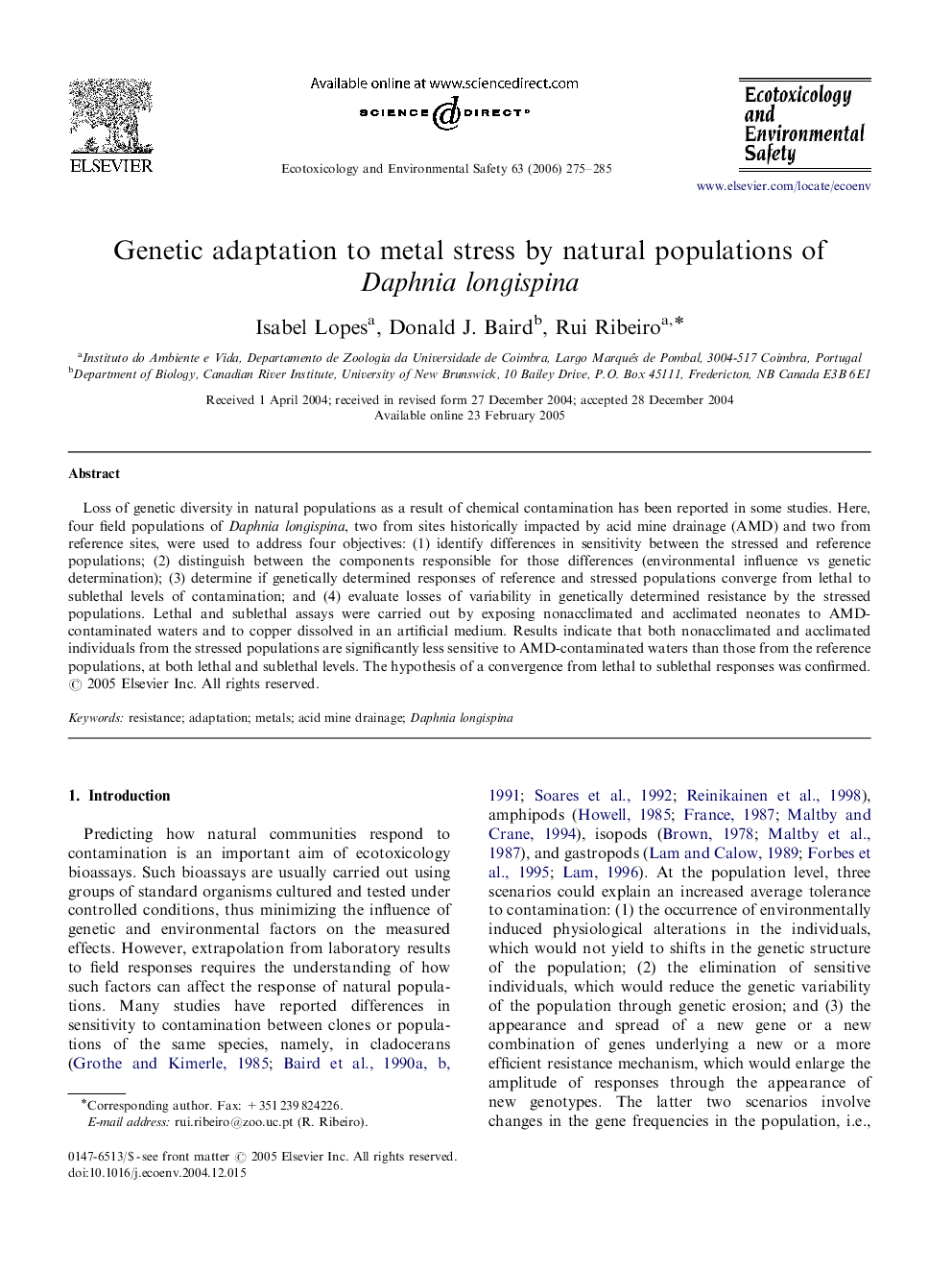| Article ID | Journal | Published Year | Pages | File Type |
|---|---|---|---|---|
| 4422532 | Ecotoxicology and Environmental Safety | 2006 | 11 Pages |
Loss of genetic diversity in natural populations as a result of chemical contamination has been reported in some studies. Here, four field populations of Daphnia longispina, two from sites historically impacted by acid mine drainage (AMD) and two from reference sites, were used to address four objectives: (1) identify differences in sensitivity between the stressed and reference populations; (2) distinguish between the components responsible for those differences (environmental influence vs genetic determination); (3) determine if genetically determined responses of reference and stressed populations converge from lethal to sublethal levels of contamination; and (4) evaluate losses of variability in genetically determined resistance by the stressed populations. Lethal and sublethal assays were carried out by exposing nonacclimated and acclimated neonates to AMD-contaminated waters and to copper dissolved in an artificial medium. Results indicate that both nonacclimated and acclimated individuals from the stressed populations are significantly less sensitive to AMD-contaminated waters than those from the reference populations, at both lethal and sublethal levels. The hypothesis of a convergence from lethal to sublethal responses was confirmed.
